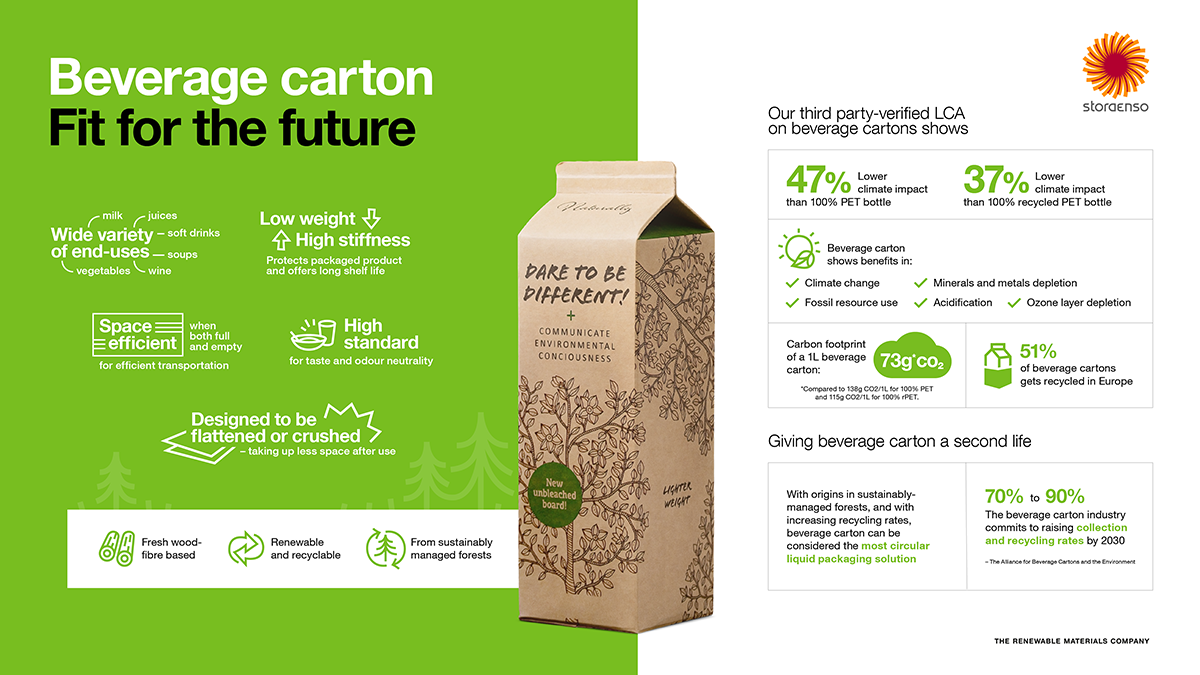Comparing the environmental impact of beverage carton
A recent LCA study confirms beverage carton is an ideal packaging solution also for the future. Below, we explore the scientific evidence that points toward beverage carton’s benefits.
Stora Enso recently commissioned a third-party verified life cycle assessment (LCA) study from Circular Analytics to understand the environmental impacts of beverage cartons as compared to PET bottles and recycled PET bottles, which are often the alternative packaging for juice, yogurt and milk. The LCA examined a unit of 1 litre of fresh milk in a typical European household packaged in the following materials:
- Beverage carton with a coating and cap made of plant-based polyethylene
- Transparent PET bottle with European average recycled content
- Transparent PET bottle made of 100% virgin PET (primary material)
- Transparent PET bottle made of 100% rPET (secondary material)
As a starting point, these materials used in the study weighed roughly the same. Including the cap, a one-litre beverage carton weighs 28.6g, while a 100% virgin and 100% recycled PET bottles with caps weigh 28g and 31.1g, respectively. PET labels add between 2.2 and 3.2g.
Fossil-free with superior climate performance
One of the most significant findings from this report concerns each materials’ climate impact, where impact refers to its carbon footprint: Greenhouse gas emissions resulting from each unit (measured as g CO2-Eq). The results show that beverage carton offers a significantly lower carbon footprint than PET bottles. The climate impact of beverage cartons (73g CO2eq) is therefore 47% lower than virgin PET bottles (138g CO2eq) and 37% lower than recycled PET bottles (115g CO2eq).
Beverage carton also outperforms PET and recycled PET in the category of fossil resource use, i.e., petroleum products. This should come as no surprise; while both products are promoted for their recyclability, the primarily fresh wood fiber-based beverage carton begins with a renewable source as opposed to PET’s fossil beginnings. Measured in megajoules (MJ) per unit, beverage carton shows 1.19 MJ while 100% virgin PET shows 2.45 MJ. 100% recycled PET shows 1.81 MJ fossil resource use.
In the case of PET and recycled PET, most of the fossil resource use occurs when the raw materials are produced as opposed to other lifecycle phases, like production or distribution.
Want to learn more about beverage carton and fiber-based packaging?
To become more familiar with fiber-based packaging materials, we recommend reading our white paper “Fresh and recycled fibers – how to choose?” For more information about the LCA results, please contact Marjukka Kujanpää, Manager, Sustainability & LCA (marjukka.kujanpaa@storaenso.com).






